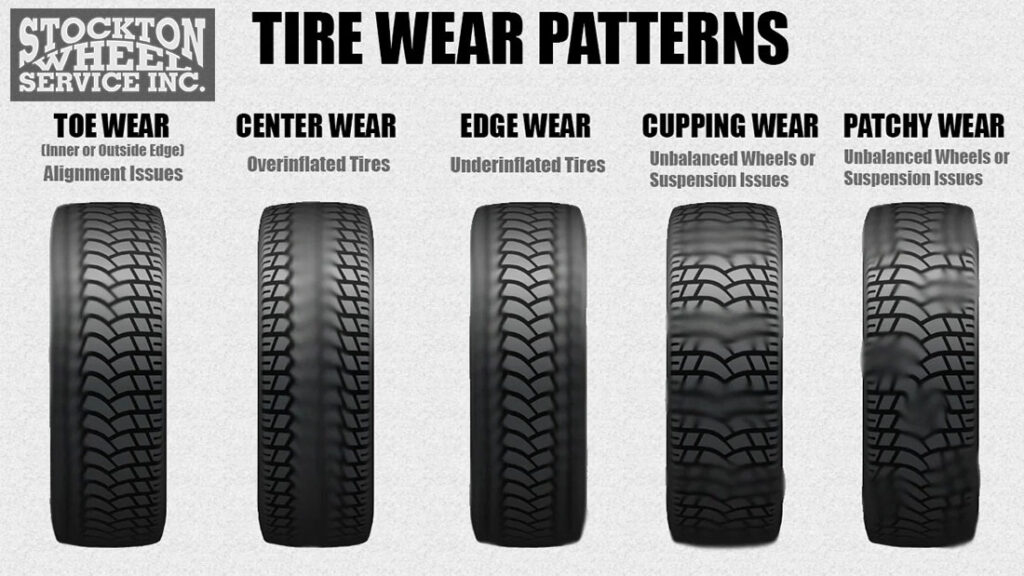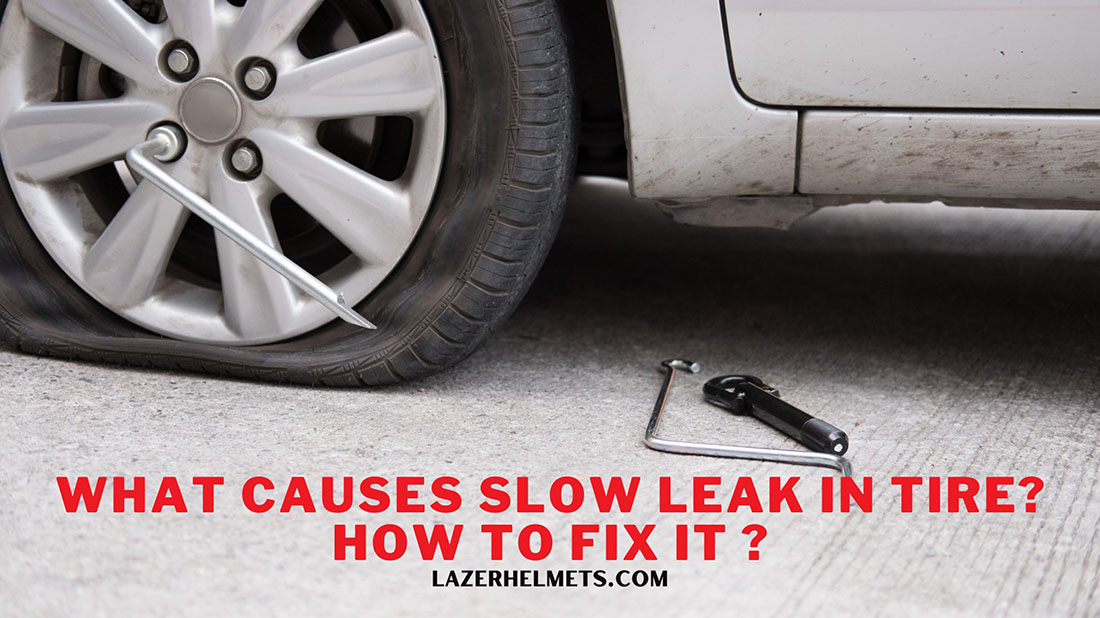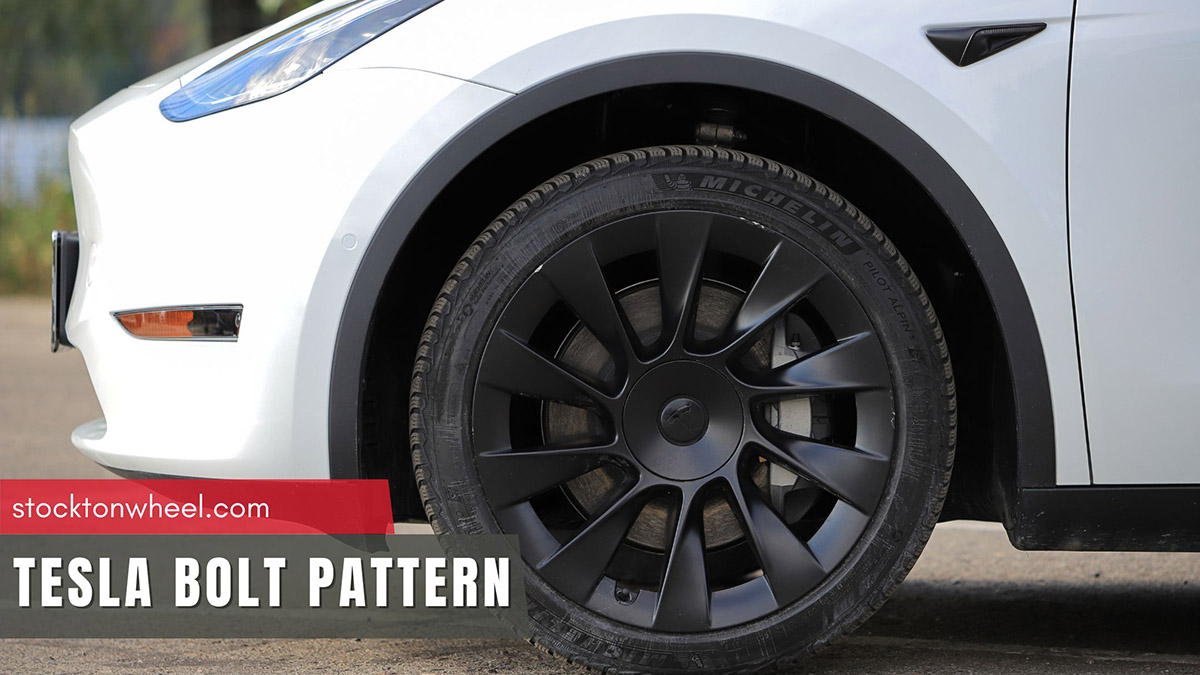The last thing vehicle owners want to encounter on their way to work or travel is a flat tire. It’s frustrating to discover your tire leaking air slowly on the way. If you do not pay attention, you may ignore the signs and end up replacing the tire. Dive into this article to handle this poor situation confidently and easily!
In this article:
How To Tell If It Is A Slow Leak Tire?
A general rule of thumb indicates that tires naturally lose 1 psi (pound per square inch) of pressure each month. However, when the rate of air loss crosses this level, it implies a slow leak has taken place with your items. Without timely detection and prevention, the tires go underinflated or flat, compromising your driving experience and safety.
Luckily, most modern cars have a Tire Pressure Monitoring System (TPMS), which performs a warning light on the dashboard whenever it detects a problem. In other words, this component monitors tire pressure and alerts you when to deal with a drop in psi rating immediately.

The more times the signal repeats, the higher the chance of a slow leak. Suppose you have supplied enough air pressure to your tires, but not long after that, the TPMS lights on. Try our detection methods below to spot the leak on time.
What Causes A Slow Tire Leak?
Puncture due to screw, nail, or sharp objects is the first culprit behind the slow leak in tires. If your tire bear, wheel, or valve stem is damaged, air also comes out slowly. Or else, aging, normal wear and tear are to blame for the leak.
A Tire Puncture

A few small punctures sometimes do not deflate your tire immediately. Nails, rocks, screws, or other road debris get stuck in the tire and prevent air from escaping. Over time, pressure loses little by little, or these things wear out and fall off, causing your tires to go flat.
If you detect it in time, a small hole is repairable. However, when the tire is no longer in good condition, you may need a new one.
Bear And Wheel Damage
If there are no visible issues on the surface of the tire, inspect the edge where the rim meets the tire bead. When the tire beads no longer properly fit the rim, it creates a serious problem as the tire fails to seal correctly.
A damaged rim wreaks havoc on the wheel. Metal surfaces are deformed due to a strong collision with a curb or potholes. Or else the edge suffers from corrosion as it is exposed to salt and other road agents. As a result, it has barely visible crevices where air escapes.
Valve Stem Damage

Another potential cause for air leaks is worn or damaged valve stems, which hinder proper pressure pumped to the tire. Determine what happened to the two main components of the valve, including the cap and the valve body.
For instance, the lid might disappear without your attention, allowing dirt to enter the inside and causing leaks. Furthermore, the valve stem core can corrode or crack for several reasons, such as limited lifespan and a combination of harmful agents in the natural environment (e.g., salt, humidity, and chemicals).
Normal Wear And Tear

This condition occurs when it reaches the end of its lifespan. Worn tire tread reduces traction and poses risks of accidents. Worse yet, small cracks may appear, resulting in a slow leak. That is why most experts recommend a new set of tires every 25,000 – 50,000 miles, depending on brand, driving habits, road conditions, and actual condition.
How To Fix A Slow Leak In A Tire
Diagnose The Leak
In addition to TPMS, you can also use some specialized tools to measure air pressure. Once you notice your psi rating fluctuates, use these simple methods to spot leaks:
- Listen and feel the tires: Some experienced drivers can detect the air leak by listening for the hiss. The echoing sound gets louder when you get closer to the cracks. Touch the surface and feel the airflow. If you feel a wave of heat escaping from the hole, that’s exactly where it is exposed.
- Observe the air bubbles: Soak the entire tire in a basin full of water and wait a few minutes. If your tire suffers from a leak, it creates air bubbles that escape the tire right at the hole. Remember to flip the tire after you are done with one side.
- Apply soapy water: The effective principle of this method is similar to the one above but can detect even smaller punctures, as the added soap can yield bubbles through minor holes. Pour liquid soap and water into a bottle and spray it over the tire. But first, cover the valve stem and the inside of the rim. If the tire leaks, bubbles appear.
Fix Slow Leak In Tire
It is best to prepare a patch kit in the trunk of your car every time you go out. The tools available are easy to use and effective to keep tires with slow leaks in good condition until you reach the repair shop.
If you have a puncture, all you need to do is use a plug and patch to prevent an air leak. A standard process involves three steps: disassemble the tire, apply the patch over the hole, and reinstall it.
Remember that not all damage can be repaired. Once the problem comes from a damaged valve, you may need a new part or, in the worst-case scenario, a new wheel. If you are unsure of your skill, visit a trusted mechanic to inspect and perform accurate maintenance.
FAQs
Can I Drive With A Slow Leak In The Tire?
No, driving with a slow leak is dangerous. If you find yourself in a situation where you must go with this damage, it would help to maintain a slow speed to reduce the risk.
How Much Does It Cost To Fix A Slow Leak In Tire?
The actual repair cost depends on what contributes to the air leak; however, you may expect the average price to range between $15-$25.
Does A Slow Leak Mean I Need A New Tire?
Not necessarily, as small punctures can be patched. You need a new tire when the puncture exists within the sidewall, or your wheel suffers from serious damage.
How Long Will A Tire Slow Leak?
A slow leak may gradually lose air over several days or even weeks. In other words, it may last several hundred miles before completely deflating.
Conclusion
It is not safe to drive with a slow leak tire, as it compromises the stability and handling of the vehicle. While it may be tempting to continue driving with a minor air loss, it is important to address the issue promptly to ensure your safety on the road. Above all, remembering regular tire maintenance, including checking for leaks and maintaining proper pressure, helps prevent slow leaks and extend your tire lifespan.








